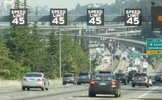This is not how the recall process works, and that’s part of why the recall process exists and applies across both hardware and software.Nope, not going to be fixed in 2 months and we should have zero expectations to. If NHTSA wants to play this game then the following will happen until the problem is fixed in.
Tesla releases next software they were going to release anyways to fix the issue
NHTSA spends 3-6 months investigating it-> wants Tesla to issue a recall because it's not fixed
Tesla issues another recall, tries to fix it with the next software update
NHTSA spends 3-6 months investigating it->wants Tesla to issue a recall
We are going to do this until it's fixed. This is what happens with generalized FSD. Who knows if the next set of trained data would fix your edge case. Tesla will always claim that piece of software is to fix the issue because that's the intent. Will it or not? I mean there are a billion different kind of road variations and scenarios, will it be perfect one day? Who knows. But hey that's why there's a driver in the seat ready to take over, hence the purpose of the person in the seat. Maybe NHTSA forgot who is responsible in preventing the car from acting dangerously.
Manufacturers do not get unlimited attempts to fix something. Regulators can gauge the adequacy of fixes and take further escalatory action. This is all very structured and the NHTSA has documentation for it, the recall process exists to identify defects and ensure they are addresses through the three available options.
What you’re saying is not how the world functions, and these people weren’t born yesterday.




